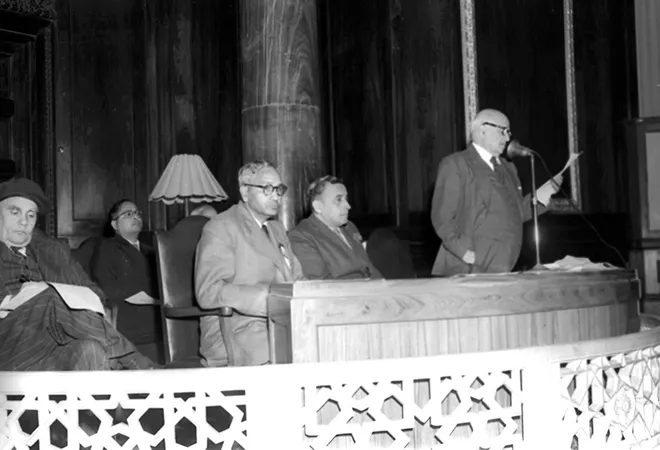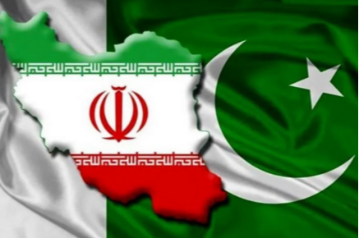
The following is a chapter from the book
70 Policies that Shaped India: 1947 to 2017, Independence to $2.5 Trillion.
Find the book here.
Created by a 15 March 1950 Resolution <1>, the Planning Commission became the centre of Independent India’s economic policy universe, and its Five Year Plans the effective economic direction of the country. Its mandate included assessing the resources of the country and formulating plans. In his 28 February 1950 Budget, <2> then Finance Minister John Mathai announced the setting up of the Planning Commission and subsequently resigned. He felt the commission would be a kind of parallel authority to the cabinet, but extra constitutional and, therefore, not subject to the usual disciplines of the democratic system, an argument that has been echoed by many <3> in subsequent years. Since then, the Planning Commission never looked back, becoming an increasingly powerful institution with every passing plan. Such was the faith in the planning process, as adopted from the former Soviet Union, that Union Budgets were drafted keeping in mind the commission’s plans, overtly <4> in the initial decade and subtly in later ones. The First Plan (1951–56) was based on the Harrod-Domar Model <5> and focused on agriculture, price stability, power and transport. The Second Plan (1956–61), led by P.C. Mahalanobis, gave concrete expression <6> to the “conception of a socialist pattern of society.” The 11th Plan (2007–12) aimed at faster and more inclusive growth. <7> To ensure the states fell in line, a 6 August 1952 Cabinet resolution <8> created the National Development Council (NDC), a body comprising leaders from the centre (the prime minister, who headed it, and all cabinet ministers), the states (all chief ministers), and all members of the Planning Commission that ratified and signed the Five Year Plans. This was a loose institutional structure, whose legalities as well as operations have been questioned, meant to secure the cooperation of states in the execution of central plans, mobilise resources to finance them, promote common economic policies, and ensure balanced and rapid development. But an analysis of the agenda papers and records of the first 50 meetings <9> indicates the dominance of a central economic thought, articulated by the prime minister and union ministers, with states following that direction. The Planning Commission was finally dissolved on 1 January 2015, <10> making way for the creation of NITI Aayog. <11>
<1> Government of India’s Resolution setting up the Planning Commission, Government of India, Cabinet Secretariat Resolution (Planning), 15 March 1950, accessed 29 December 2017.
<2> John Mathai, “Speech of Shri John Mathai, Minister of Finance introducing the Budget for the year 1950-51,” Ministry of Finance, Government of India, 28 February 1959, accessed 29 December 2017.
<3> H.K. Paranjape, “Planning Commission as a Constitutional Body,” Economic and Political Weekly 25, no. 45 (10 November 1990): 2, 479, accessed 29 December 2017.
<4> See Budgets 1953–54 (para 34), Budget (p 3), Budget 1952–53 (p 8), Budget 1951–52 (para 46), and White Paper on Budget 1950–51 (para 60), accessed 29 December 2017.
<5> Subrata Ghatak, “Introduction to Development Economics,” Routledge, 1998 edition, 367.
<6> Deendayal Upadhyay, “The Two Plans: Promises, Performance, Prospects,” Prabhat Prakashan, 2015 edition, 163–164.
<7> Eleventh Five Year Plan (2007–12), Inclusive Growth, Planning Commission, Government of India, 25 June 2008, accessed 29 December 2017,
df.
A. Srija, “National Development Council (NDC),” Arthapedia, accessed 29 December 2017.
<9> Summary Record of Discussions of the National Development Council (NDC) Meetings: Five Decades of Nation Building (Fifty NDC Meetings), Volume 1 Chapter 6: Planning Commission, 1950 (Meetings 1–14), Planning Commission, Government of India, 15 October 2005, accessed 29 December 2017.
<10> Resolution, Cabinet Secretariat, Gazette of India Extraordinary, 1 January 2015, accessed 29 December 2017.
<11> Notification, Cabinet Secretariat, 7 January 2015, accessed 29 December 2017.
The views expressed above belong to the author(s). ORF research and analyses now available on Telegram! Click here to access our curated content — blogs, longforms and interviews.



 The following is a chapter from the book 70 Policies that Shaped India: 1947 to 2017, Independence to $2.5 Trillion.
Find the book
The following is a chapter from the book 70 Policies that Shaped India: 1947 to 2017, Independence to $2.5 Trillion.
Find the book  PREV
PREV



